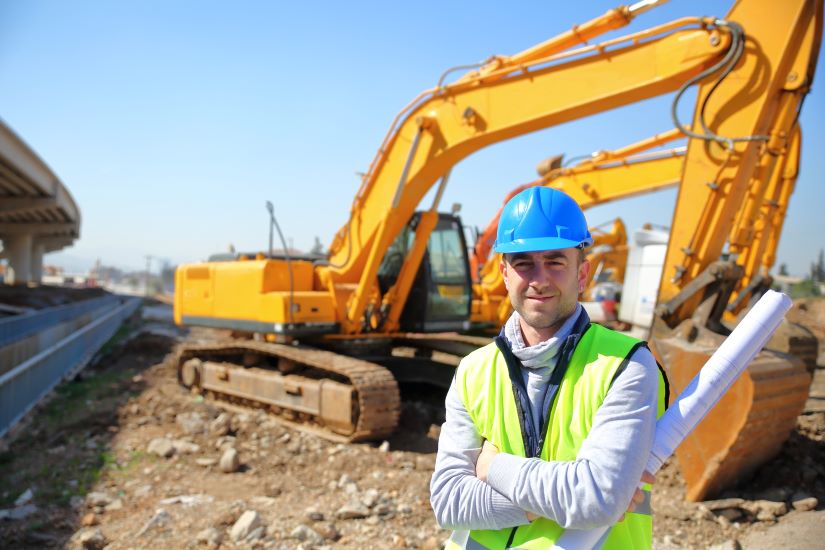Operating heavy equipment increases a worker’s risk of injury. However, this risk can be greatly mitigated with strong safety training and commitment to technology like equipment operator monitoring.
Engineers and construction professionals have developed monitoring technology and processes to enhance on-site security. Here are several ways operator monitoring can contribute to industrial and construction safety.
The importance of safety applications
Nearly 20% of employee deaths in America happen on construction sites. In 2019, about 5,333 individuals died at work, meaning 1,067 builders experienced fatal accidents. This industry is more dangerous than other sectors because it deals with heavy machinery.
There are four major causes of injury on construction sites, and many of them result in death. Nearly 33.5% of employee fatalities result from falls. Inadequately tested or maintained machinery and materials can cause dangerous incidents.
Fortunately, both greater safety awareness and technological improvements have made preventing jobsite accidents easier each year. There are five ways construction site managers can enhance safety for equipment operators, which remote monitoring applications leading the way in terms of new technology.
1. Conduct a walkaround inspection
A traditional method of monitoring equipment safety is walkaround inspections. Conventionally, managers go from machine to machine, assessing their quality and identifying defaults. While the safety measures help prevent injury, utilizing technology can increase their efficiency.
One technology helping site managers access and record data is geographical information systems (GIS). They help professionals report audit and inspection information, enhancing the accuracy of records. Currently, Australian builders are using the application to abide by capital territory construction laws and standards.
The technology also enhances the speed of inspections, helping managers regulate more equipment in a short amount of time. When professionals accurately and efficiently inspect the equipment, they can significantly decrease the number of on-site injuries and fatalities.
2. Inspect site conditions
Another way to improve the safety of equipment operations is by inspecting construction site conditions. When managers minimize on-site interferences, they decrease some of the common causes of on-site fatalities.
One technology improving inspections is drones. These machines help managers map and survey a construction site remotely, enhancing the safety of operations. They can specifically inspect roads, detect leaks and evaluate ground conditions. Additionally, drones may assess a building’s stability, minimizing material fall risks.
The unmanned aerial vehicles (UAVs) also help managers quickly and accurately inspect a site. The technology’s efficiency helps heavy machine operators get back to their jobs safely, reducing fatality risks.
3. Beware of load limits
Wear and tear on equipment can have adverse consequences over time. When machines carry loads over their limits, they are more susceptible to damage and defaults, increasing injury risks. Construction site managers should evaluate the limitations associated with each piece of equipment to enhance operators’ safety.
Some workers try to modify their systems using trailers, straps and chains to accommodate different load weights. While the modifications offer short-term solutions, they are less secure than abiding by load limits.
4. Track equipment conditions with remote monitors
Engineers and construction professionals developed a technological device to help site managers monitor equipment conditions remotely. The technology uses the Internet of Things (IoT) to connect wireless sensors to the cloud, allowing managers to access necessary data from anywhere. When they identify defects in a heavy machine, they can efficiently alert a repair professional to fix the part before operators use the machinery.
Construction site managers can keep track of their equipment’s health with this technology to extend their longevity. The device also reduces repair costs, identifying issues before significant damage occurs. It can connect to gearboxes, compressors, pumps and fans, decreasing any unnecessary damage.
5. Enhance workers’ training programs
Another way site managers can improve equipment operators’ safety is through efficient training programs. Engineers developed new technologies to support training for employees working on heavy machines. Managers are using simulators to teach workers adequate operation skills without the risk of injury or machine damage.
Once employees exceed the simulator training phase, they can move to on-site training. During the final stage, managers can track operators’ moves and skills with GPS and smart sensors. The technology autonomously delivers information to remote monitoring professionals, increasing their safety during the initial phases.
Should you advance your safety applications?
As engineers conduct technological advancements, more safety-enhancing devices become available to construction site managers. Determining whether you should adopt new technologies is challenging, mainly because of their high costs.
Investing in them can significantly benefit an industrial site or construction company, improving the safety of working conditions and decreasing insurance costs.



